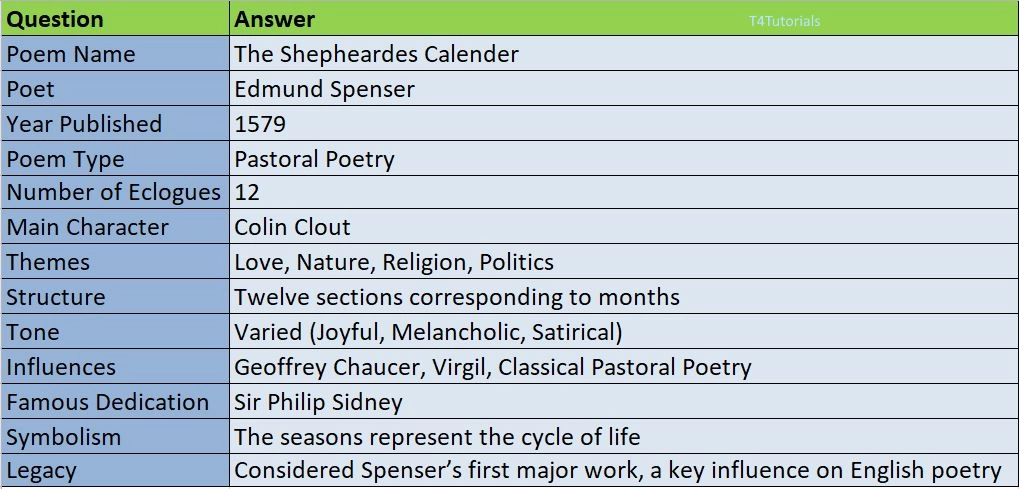Summary:
The Shepheardes Calender is a pastoral poem by Edmund Spenser, first published in 1579. It consists of twelve eclogues, one for each month of the year, and follows the life of a shepherd named Colin Clout, who represents the poet himself. The poem is heavily influenced by classical and Renaissance pastoral traditions, featuring themes of nature, love, religion, and politics. Each eclogue takes a different tone and theme, ranging from romantic love to social and political commentary. The poem is dedicated to Sir Philip Sidney and serves as Spenser’s attempt to establish himself as a major English poet. It also includes references to Queen Elizabeth I and the Protestant Reformation. The structure of the poem reflects the changing seasons, moving from the harshness of winter to the joys of spring and summer and back to winter’s difficulties, symbolizing the cycle of life and poetic inspiration. The work is known for its complex use of language, borrowing heavily from Chaucerian English and Latin influences.
10
Score: 0
Attempted: 0/10
Subscribe
| Question | Answer |
| Poem Name | The Shepheardes Calender |
| Poet | Edmund Spenser |
| Year Published | 1579 |
| Poem Type | Pastoral Poetry |
| Number of Eclogues | 12 |
| Main Character | Colin Clout |
| Themes | Love, Nature, Religion, Politics |
| Structure | Twelve sections corresponding to months |
| Tone | Varied (Joyful, Melancholic, Satirical) |
| Influences | Geoffrey Chaucer, Virgil, Classical Pastoral Poetry |
| Famous Dedication | Sir Philip Sidney |
| Symbolism | The seasons represent the cycle of life |
| Legacy | Considered Spenser’s first major work, a key influence on English poetry |